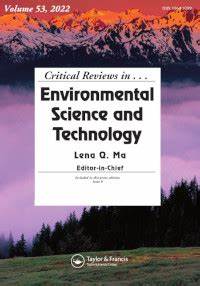富营养化生物炭的生产研究进展:从氮、磷、钾演化的启示
IF 13.2
1区 环境科学与生态学
Q1 ENVIRONMENTAL SCIENCES
Critical Reviews in Environmental Science and Technology
Pub Date : 2025-06-18
DOI:10.1080/10643389.2025.2457991
引用次数: 0
摘要
生物炭是一种由生物质热化学转化产生的含碳固体,通常用于土壤改良。与从木屑和草中提取的生物炭相比,从营养丰富的原料(如污水污泥、动物粪便、微藻和湿地植物)中提取的生物炭含有更高的营养成分,具有更大的土壤应用潜力。为了实现生物炭中营养物质的有效利用,氮(N)、磷(P)和钾(K)在富营养化原料热解过程中的行为应该得到澄清。本研究对富营养化生物质生产生物炭过程中N、P、K的迁移转化进行了系统综述,重点研究了富营养化生物炭对土壤速效养分的影响。讨论了生物炭在农业应用中的前景和挑战。热解过程中N、P、K的迁移转化受热解温度和原料性质的影响。施用富营养化生物炭可以提供额外的养分,改变土壤的理化性质,修饰微生物群落,提高土壤速效养分含量。因此,利用富含N/P/ k的生物质废弃物生产富营养生物炭用于土壤是一种很有前途的可持续农业方案。本文章由计算机程序翻译,如有差异,请以英文原文为准。
A review on the production of nutrient-enriched biochar: Insights from the evolution of nitrogen, phosphorus, and potassium
Biochar, a carbonaceous solid produced by thermochemical conversion of biomass, is commonly used for soil improvement. In comparison with the biochars derived from wood chips and grass, the biochar produced from nutrient-enriched feedstocks (e.g., sewage sludge, animal manure, microalgae, and wetland plants) contained higher contents of nutrients and showed greater potential for soil application. To achieve the efficient utilization of nutrients in biochar, the behavior of nitrogen (N), phosphorus (P), and potassium (K) during pyrolysis of nutrient-enriched feedstock should be clarified. This study provides a systematic review of the migration and transformation of N, P, and K during the production of biochar derived from nutrient-enriched biomass, with special emphasis on the effects of nutrient-enriched biochar on soil available nutrients. Perspectives and challenges for agricultural applications of biochar are discussed as well. The migration and transformation of N, P, and K are affected by the pyrolysis temperature and the properties of the feedstock during the pyrolysis process. The application of nutrient-enriched biochar could provide additional nutrients, change the physicochemical properties of soil, and modify microbial community to elevate the content of soil available nutrients. Therefore, the production of nutrient-enriched biochar from N/P/K-enriched biomass wastes for soil applications is a promising scheme for sustainable agriculture.
求助全文
通过发布文献求助,成功后即可免费获取论文全文。
去求助
来源期刊
CiteScore
27.30
自引率
1.60%
发文量
64
审稿时长
2 months
期刊介绍:
Two of the most pressing global challenges of our era involve understanding and addressing the multitude of environmental problems we face. In order to tackle them effectively, it is essential to devise logical strategies and methods for their control. Critical Reviews in Environmental Science and Technology serves as a valuable international platform for the comprehensive assessment of current knowledge across a wide range of environmental science topics.
Environmental science is a field that encompasses the intricate and fluid interactions between various scientific disciplines. These include earth and agricultural sciences, chemistry, biology, medicine, and engineering. Furthermore, new disciplines such as environmental toxicology and risk assessment have emerged in response to the increasing complexity of environmental challenges.
The purpose of Critical Reviews in Environmental Science and Technology is to provide a space for critical analysis and evaluation of existing knowledge in environmental science. By doing so, it encourages the advancement of our understanding and the development of effective solutions. This journal plays a crucial role in fostering international cooperation and collaboration in addressing the pressing environmental issues of our time.

 求助内容:
求助内容: 应助结果提醒方式:
应助结果提醒方式:


